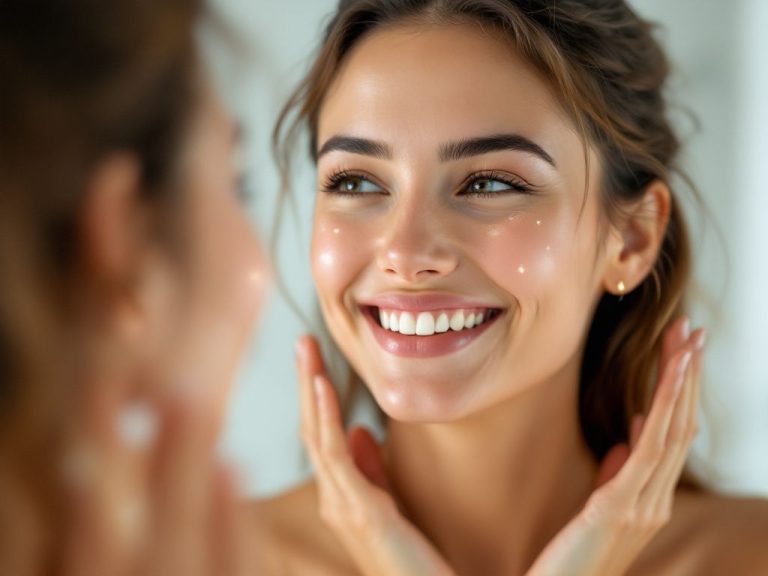Alright, let’s dive in! We all have those moments where our skin decides to throw a party—uninvited, I might add—bringing along a bunch of uninvited guests in the form of acne. You know the kind; stubborn little breakouts that linger around and seem to hold an impromptu meeting on your face just when you’re heading to that important event. Well, it’s possible that “comedogenic basics” is the secret party planner that needs to be addressed.
Table of Contents
ToggleWhat Are Comedogens Anyway?
Simply put, anything labeled as ‘comedogenic’ has the potential to clog pores. Imagine your skin is like a field of little openings, merrily hiss-humming along, doing their business of letting air escape. When comedogens come in, they crash the field and seal off the exits. Not cool. This clogging leads to the stuff we dread—acne, blackheads, whiteheads.
Pore-Clogging Pranksters: How It Relates to Acne
Comedogenic substances act like mischievous kids on the block. They invade your pores, fill them up, and block any escape route for oil and dead skin cells. All that trapped material causes eruptions (not the fun ones like those volcano trial runs back in science class) and, voilà, acne blooms.
*Imagine our pores as tiny, honest workers needing a clear path to function. Comedogens block the route, causing the inevitable pile-up.*
A Practical Peek: Common Comedogenic Ingredients
When we talk “products,” it’s this little ingredient list you should squint at. Keep an eye out for:
- Coconut Oil: Feels great but can be notorious. Acts like the life of the party, but leaves your pores gasping for fresh air.
- Cocoa Butter: That’s right. Mother Nature’s own can sometimes be a mixed blessing.
- Lanolin: Great for intense hydration—less great if you want to keep those pores breathing.
None of these are inherently evil. After all, skin is a personal journey. But they might just prove too heavy for certain skin types.

Behavior Under Investigation: Identifying Culprits in Your Routine
Let’s pull out the magnifying glass. Whether it’s skincare, makeup, or even certain hair products, comedogenic ingredients love to hide. All it takes is a quick scan at what’s going onto your face every day. Yeah, it sounds tedious, but trust me—it’s worth the hassle.
Try This: Decoding Skincare Product Labels
Overwhelm aside, start by focusing on the first five ingredients on a product label. Think of these as the most likely suspects because they’re in the highest concentration. If one sounds a little too much like the comedogenic culprits from above, consider trying something else.
One Size Doesn’t Fit All
Spoiler alert: everyone’s skin is different! There’s no universal baddie covering comedogenic basics for everyone, so you’d want to note how your skin reacts.
Daily Routine Troubleshooting
Alright, now we’re onto my favorite part—the routine. Breaking down the steps is akin to mastering a basic dance rhythm before launching into the full choreography.
Face Wash for Balance

Start simple, start safe. Use a non-comedogenic face wash. Look for labels that claim “won’t clog pores,” as it takes away the guesswork. Usually, gel formulas fit this profile better than creamy ones.
**Suggested Ingredients**:
- Salicylic Acid: Gently dislodges those pore-jamming elements, doing the heavy lifting while you’re just splashing away.
- Green Tea Extracts: Light as a breeze yet soothing, known to flatten stubborn bumps.
Moisturizers: Friends or Foes?
Even if you’ve written off moisturizers (yes, we’re talking to the oily-skin crowd), don’t. A light, non-comedogenic moisturizer can keep that moisture balanced without flooding your pores.
Sunscreen Everyone Should Swear By
The love-hate relationship with sunscreen is real, but skipping it isn’t an option. Choose formulas explicitly labeled as “non-comedogenic.” Gel-based sun protections or those with zinc oxide sit comfortably well.
Detective Work Revisited: Experiments and Learnings
Alright, so you’ve heeded the suggestions above. But the work’s not over yet. Now it’s all about analysis—observing your skin type’s natural biodiversity and tweaking the strategy to really make it shine.
Trial and Observation

Allow yourself a couple of weeks to monitor changes. New products could have a detox effect, and sometimes, this patience pays within noticeable skin improvements.
Skin Type Wisdom
Paying attention to factors like **age**, **diet**, and **lifestyle** comes into play. The way your skin reacts in Florida vs. Alaska can change dramatically.
The Wrap-Up: Know Your Skin, Inside and Out
So there we have it. At the heart of “comedogenic basics,” understanding which ingredients might crowd up your skin is key. A good examination of habits and tools acting in harmony will reveal a more luminous complexion. Don’t hesitate to switch gears if a combination isn’t working for you.
Recap
- Keep non-comedogenic labels as your clarion call.
- Decode ingredient lists like a maestro scanning sheet music.
- Peacefully invest, experiment, and embrace learning what truly lets your pores breathe easy.
Keep the dialogue open with those epidermal needs—in no time, an educated, clear skin outlook becomes entirely within reach!
Understanding your skin isn’t magic—it’s just becoming more mindful of what you’re choosing to let it soak in. Stick to the path and remember, a routine that works for you allows your natural glow to be more radiant than ever. 🌟
Remember, I’m just one post. Sometimes, professional advice can do wonders. Don’t hesitate to consult dermatological experts for personalized understanding of your lovely face and framework!
Frequently Asked Questions
What does “comedogenic” mean in the context of skincare?
Comedogenic refers to a product or ingredient that has the potential to clog pores, leading to the formation of comedones (blackheads and whiteheads). These ingredients can cause buildup of excess oil, dead skin cells, and other impurities, creating an environment conducive to acne-causing bacteria[2][3][4).
What are some common comedogenic ingredients to avoid in skincare products?
Some common comedogenic ingredients include beeswax, cocoa butter, and dimethicone. Beeswax can prevent keratin from leaving pores, cocoa butter can fill pores and prevent oxygen circulation, and dimethicone, a silicone-based polymer, can cause comedones if not properly cleansed[1][3][5).
How is the comedogenicity of a product measured?
The comedogenicity of a product is measured on a scale from 0 to 5, where 0 indicates that the substance is completely non-comedogenic and unlikely to clog pores, and 5 signifies that it is highly comedogenic and should be avoided by those with acne-prone skin or sensitive skin[2][3][4).
Why is it important to choose non-comedogenic products for acne-prone skin?
Choosing non-comedogenic products is crucial for acne-prone skin as these products do not clog pores, allowing the skin to breathe and function properly. This reduces the risk of pore blockages, acne breakouts, and other skin issues. Non-comedogenic products help maintain a clear, healthy complexion and minimize the chances of developing acne or other skin conditions[2][3][4]).
References- Skin Type Solutions. (2023). Comedogenic Acne Causing Ingredients in Skin Care.
- OneSkin. (2025). What Does Non-Comedogenic vs Comedogenic Mean?.
- Primally Pure. (2024). Comedogenicity + Skin Care: What You Should Know.
- Acne.org. (2023). What Do “Comedogenic” and “Non-comedogenic” Mean?.
- Skin Nutritious. (2023). Comedogenic Ingredients • Official Skin Nutritious List.








